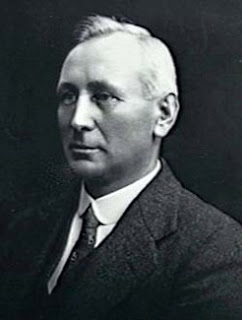 |
| The Lemonheads in 1987. |
The Lemonheads were formed by a group of high school friends in Boston in 1986.
They came to prominence in the early 90s; their jangling guitars and bittersweet, melodic pop songs finding a place among the alt-rock music that dominated the era. Their 1992 album, It's a Shame About Ray, was a critical and commercial success, and one of the defining records of the era.
 |
| Evan Dando, 1992. Note the 'Smudge' tshirt. |
Lemonheads frontman Evan Dando seemed like the quintessential 90s rockstar; sensitive, laconic, scruffy, and largely unchanged by success. Dando was the one constant in the band as it developed, with other musicians coming and going regularly. He also had a documented drug problem, and his behaviour was erratic at times.
But his sweet voice and facility with wistful lyrics always shone through, whatever turbulence had occurred in the background.
By the time the 90s became the 2000s, The Lemonheads were defunct (splitting in 1997) and Dando was performing as a solo artist.
But his recorded output since the band had ended consisted of only one live album, 2001's Live at the Brattle Theatre, which served to showcase an artist resting on former glory; his set list made up of old Lemonheads songs and covers. In the intervening years, Dando's drug and alcohol problems had worsened and the artists behaviour had become increasingly eccentric and unpredictable. He sometimes appeared disorientated in interviews, and struggled to finish his sets when onstage.
Then, things seemed to take a turn for the better.
In 2003, Dando finally recorded his first solo album of new material, Baby I'm Bored. This was accompanied by a much publicised detox and a change to a healthier lifestyle. The new, improved Dando would support his album with a world tour, a showcase for his reinvigorated talent, body and mind.
 |
| Evan Dando and Nic Dalton |
Evan Dando had a long history with Australia.
In the early 90's, before he made it big, he had travelled around the country, and had fallen in with a couple of like minded local musicians, Tom Morgan and Nic Dalton. Morgan and Dalton, best known locally as part of the band 'Smudge', had helped write the songs that became It's a Shame About Ray. Dalton would subsequently join the Lemonheads and serve as one of their many guitarists, playing and touring for two and a half years to 1996.
Once he left the band, Dalton then moved from playing to production, founding the successful local indy label Half-a-Cow records.
So when Dando needed musicians for a backing band for his solo tour, he turned to his old friend and colleague Dalton, asking him to play base. Dalton agreed, and he became part of what appeared, on paper, to be something of an alt-rock supergroup; alongside Dando and Dalton were former Dinosaur jr drummer George Berz, and You Am I guitarist Davey Lane.
Two shows were set for Melbourne, in the first week of August, 2003.
 |
| Dando at The Prince, August 2003. |
Sporting a beard, a trenchcoat and heavy, lidded eyes, Dando's first show at The Prince was something of a mess. The singer, clearly not entirely with it, began his set by mocking the venue:
'This place used to rule! Now it sucks. God bless gentrification, right?'
Things went downhill from there.
Standing on the corner of the stage, Dalton plucked at his base, looking unimpressed. He would leave the band immediately after the show, his participation in the tour over.
Although whether he was fired, as originally announced, or left due to Dando's behaviour, has never been established (a website with Dalton's name attached currently indicates that he left the band because he was unwell).
Whatever the explanation, with a gig the following night Dando was now without a base player. Whether due to bravado, or his lackadaisical nature, the singer simply decided to soldier on without one.
August 2, 2003 then. Evan Dando at The Hi Fi Bar.
One of the most notorious gigs in the city's long musical history.
 |
| The mystery girl, onstage with Evan Dando at the Hi Fi. |
The night started unremarkably enough; the set opening with Dando onstage, by himself, singing a Lemonheads number, The Outdoor Type.
Things became strange as his band joined him for the set proper. Accompanying the rest of the group onstage was an unknown young girl, who joined Dando at the microphone.
As a remarkable coda to the story, the embarrassed young girl on stage, holding up the words to songs that Dando had forgotten, was later found to be Missy Higgins. Higgins, a Lemonheads fan but then totally unknown, had talked her way into the sound check in the hope of catching a glimpse of Dando. She and Dando had begun talking, and he had impulsively insisted that she join the band on the stage.
Despite the chaos of the Melbourne shows, the group was able to salvage something from the rest of the tour. Dando had cleaned himself up somewhat by the time they played two shows in Sydney, and the musicians had more time to rehearse, making for a tighter live set.
Subsequent to the tour, Dando has continued to follow his own path.
He has detoxed and cleaned up a number of times, and has relapsed an equal number. He still tours Australia regularly, with the gigs running the full spectrum from the sublime to the ridiculous.
But nothing has topped his efforts at the Hi Fi Bar, in 2003.
Recalling his infamous effort during an interview in 2006, Dando seemed characteristically non-plussed:
As fitting a summation as any.































